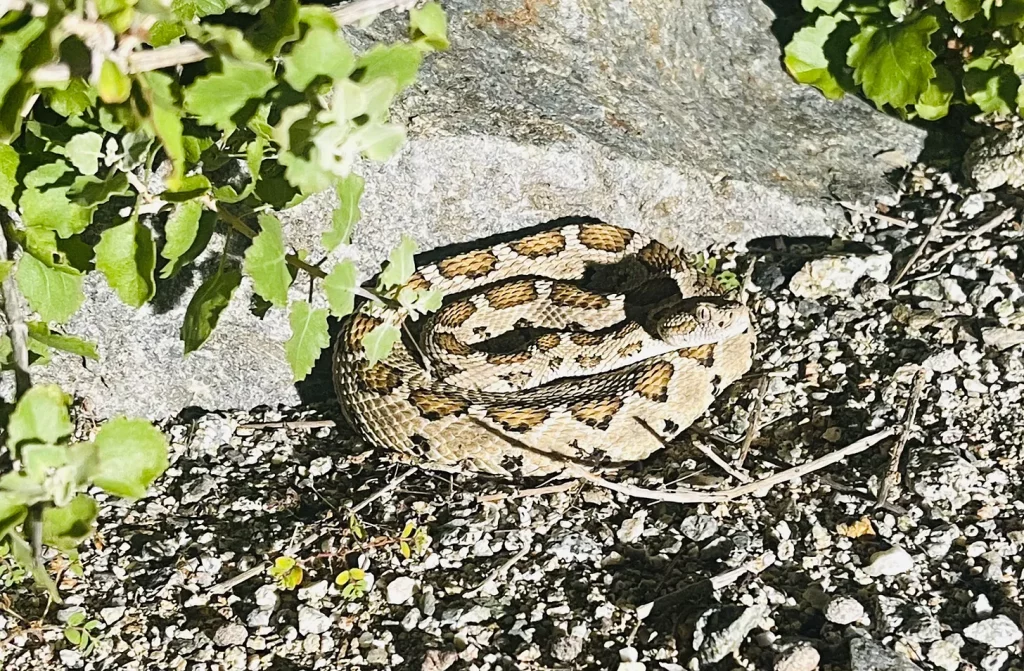
This week, I will be covering the Cape Region’s third and final rattlesnake: the beautiful Lower California Rattlesnake (Crotalus enyo).
I was fortunate enough to come across two on my recent trip to Cerralvo. These gorgeous little rattlers are ambush predators, and spend most of their time in wait of prey. In my experience, they are quite docile and will remain still to avoid detection before slithering off into the brush. They are not as large as other rattlesnakes in the area, and typically less common as well.
Interestingly, these rattlesnakes don’t just eat the typical array of rodents and lizards; they are also well known to eat centipedes! Rattlesnakes have quite a reputation and, although they are dangerous, I am personally much more worried about their venomous centipede prey!
Unfortunately, upon discovering rattlesnakes, a common reaction is for people to promptly kill them out of fear. Sometimes they are relocated, yet very rarely are they just left to just go about their business. Although relocating a snake is much better than the alternative, rattlesnakes are very important to the ecosystem, and we don’t really have many of them left in LV/ES proper anymore.
Here are a few reasons rattlesnakes are good neighbors:
- Pest control: rattlesnakes are especially successful at hunting rodents.
- Rattlesnakes keep to themselves; it is actually quite difficult to find rattlesnakes even where they are common.
- They sleep through the winter months; from December to March rattlesnakes are mostly underground.
- They won’t stop by uninvited or, if they do, you won’t have to worry about serving them beverages and small talk.
November Reptile Walks! Come join us to find reptiles! This Friday, November 3rd, and Sunday, November 12th, from 9-11am we will be hiking Punta Gorda in search of serpentine friends. It will be a fun, educational event, although we are not guaranteed to find anything. Meet at the Punta Gorda Trailhead on the far north end of town. chancestevens123@icloud.com